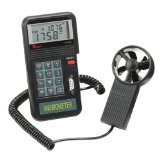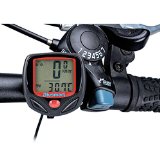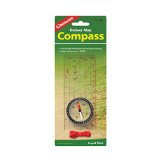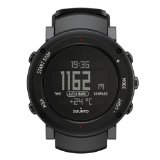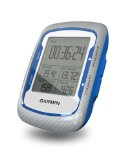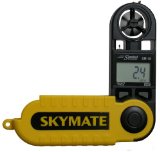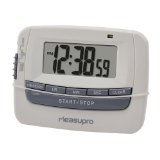The Dwyer VT-200 anemometer with vane probe and data logger measures air velocity in m/s, fpm, knots, mph, and km/h, calculates air flow volume in cfm and cmm, measures air temperature in degrees C and F, and has average, minimum, maximum, and hold functions for analyzing air flow. Multi-point average function displays the average value of recorded readings. Minimum and maximum functions display the highest and lowest recorded readings. Hold function freezes a reading on the display to aid documentation. Built-in data logger records up to 1,000 readings. For transferring and storing data directly to a PC, the meter has an output terminal for connecting to the RS-232 serial port of a PC and includes Microsoft Windows compatible PC software for data analysis. The LCD shows two parameters simultaneously. The meter has European Conformity (CE) marking. This anemometer is used for monitoring air flow and temperature in ductwork, spray booths, and exhaust hoods, among other applications.
Specifications
| Air velocity range | 0.3 to 45 m/s; 60 to 8,800 fpm; 0.6 to 88.0 knots; 0.7 to 100 mph; 1 to 140.0 km/h |
| Air velocity resolution | 0.1 m/s; 10 fpm; 0.1 knots; 0.1 mph; 0.1 km/h |
| Air velocity accuracy | + or – 3% |
| Air flow volume units | cfm, cmm |
| Air temperature range | 0 to 50 degrees C/32 to 122 degrees F |
| Operating environment | 0 to 60 degrees C/32 to 140 degrees F |
| Power | (1) 9V battery (included) |
| Vane diameter | 53.58 mm/2-3/32 inches |
| Main unit dimensions (H x W x D) | 162.56 x 81.44/6-13/32 x 3-7/32 inches |
| Weight | 350 g/12.3 oz. |
H is height, the vertical distance from the lowest to highest point; W is width, the horizontal distance from left to right.
Anemometers, also called wind meters, measure air velocity and are most commonly used for weather monitoring to determine wind speed and for HVAC applications to determine air flow within ducts. In addition to air velocity, anemometers may measure wind direction, air pressure, air flow volume, air temperature, humidity, light, and other properties. The most common types of anemometer are cup, vane, hot-wire, and Pitot tube. Cup and vane anemometers calculate air velocity based on the number of rotations of the cups or vane. Hot-wire anemometers calculate air velocity by measuring the change in electrical resistance as air flow cools a heated wire. Pitot tube anemometers measure air pressure within a tube and calculate air velocity based on the difference in pressure between the air inside and outside of the tube. Many anemometers have digital readouts and can display air velocity readings in different units of measure, such as meters per second (m/s), feet per minute (ft./min. or fpm), knots, miles per hour (mph), and kilometers per hour (km/h).
Dwyer Instruments manufactures measurement and control instruments, including pressure gauges, flow meters, level instrumentation, temperature instrumentation, and air quality monitors. The company, founded in 1931, is headquartered in Michigan City, IN.
What’s in the Box?
- Dwyer VT-200 anemometer
- Vane probe
- PC software
- RS-232 communications cable
- (1) 9V battery
- Carrying case
- Instructions

